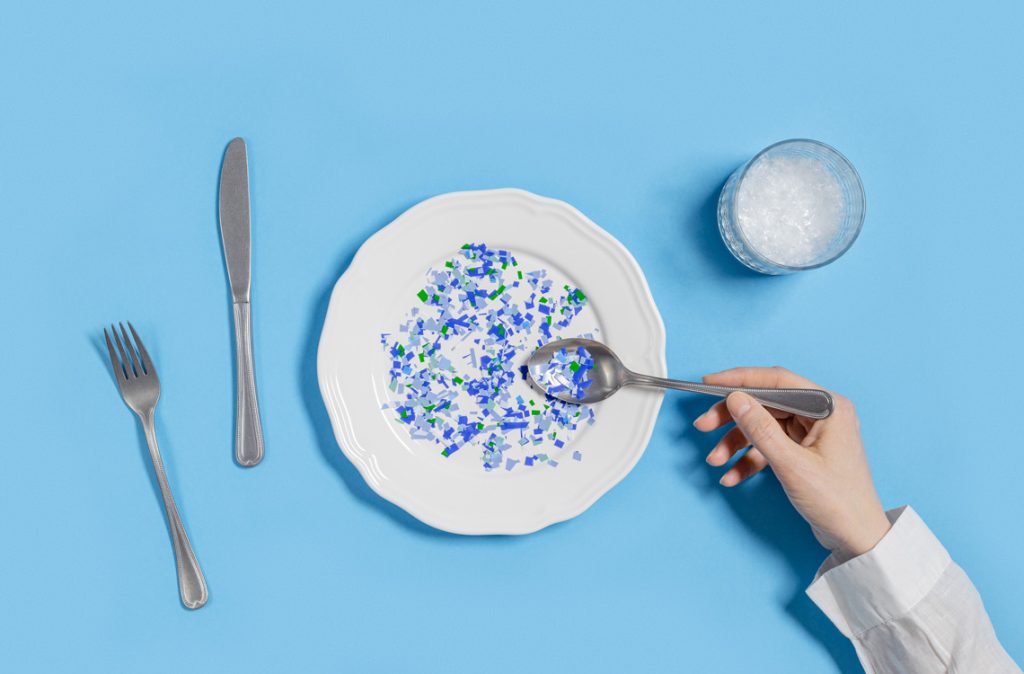As mums, we’re always trying to ensure our family’s utmost health and wellbeing.
From the food they eat to the water they drink—nutrition and safety, that’s the key.
But what if something harmful was already sneaking past our precautions into our lives and bodies even when we’re doing everything ‘right’?
Microplastics. You’ve probably heard about them before.
Tiny particles in our environment that are slowly seeping their way into our system.
From the food we eat to the air we breathe.
The more we learn about them, the more worrying they become.
According to The Straits Times, experts are sounding the alarm about the potential health risks posed by microplastics.
While studies are ongoing, one thing is clear: we need to start paying attention.
What Exactly Are Microplastics?
Microplastics are tiny plastic particles smaller than 5 millimetres.
They come from various sources: broken-down packaging, synthetic fabrics, cosmetics, and even car tyres.
Some are added intentionally (like in exfoliating scrubs), while others are the result of plastic waste degrading over time.
They’re so small that they easily end up in our food, water, and even the air we breathe.
Studies have found microplastics in seafood, salt, bottled water, and even placentas (yes, placentas).
Which means, as mums, we’re not just worried about ourselves anymore. We’re worried about our children too.
What Makes Microplastics So Dangerous?
At first glance, microplastics might seem harmless. After all, they’re tiny.
But experts warn that these particles may carry toxic chemicals or harmful bacteria.
And once they’re inside our bodies, they don’t just disappear.
There’s growing concern that microplastics could cause inflammation, disrupt hormones, or even lead to long-term issues like fertility problems and even cancer.
While more research is needed to fully understand their dangers, do we really want to wait until then to start taking action?
That said, we have enough compelling reasons to be worried from the limited studies we already do have.
For instance, we already know that microplastics are everywhere.
Research shows that the average adult consumes several hundred to a few thousand particles per week.
The scary part? It’s happening every day, in ways we might not even realise.
- Food: Seafood is one of the biggest culprits, since marine animals often consume microplastics floating in the ocean. But they’ve also been found in common foods like rice, fruits, and vegetables.
- Water: Tap water and bottled water alike have been shown to contain microplastic particles. Even the containers we store food in—especially plastic ones—can leach microplastics into our meals.
- Air: Microplastics are in the dust we breathe at home. Synthetic clothing sheds fibres with every wash and wear, and they can hang around in the air or settle on our food. Which we later ingest.
How Can Parents Help?
While we can’t eliminate microplastics from the environment altogether, that doesn’t mean the fight is over.
Here are some simple, realistic steps we can take to reduce our family’s exposure to microplastics:
Cut Back on Plastic Use
This one’s obvious but powerful.
Switch to glass, stainless steel, or ceramic containers for food and drink. Avoid cling wrap and plastic takeaway boxes.
Bring your own containers when buying groceries or food outside.
Choose Fresh Over Packaged
Processed and pre-packed foods are more likely to have come into contact with plastic.
Opt for fresh fruits, vegetables, and whole foods when you can.
They’re healthier and likely lower in microplastics too.
Filter Your Drinking Water
Consider using a water filter that can reduce microplastic content.
Some filters, especially those with activated carbon or reverse osmosis, are more effective at catching tiny particles.
Be Mindful of Seafood
Seafood is nutritious, but moderation is key.
Look for sustainably sourced options and mix up your protein sources to reduce overall exposure.
Wash Clothes Smartly
Use a microfibre filter or laundry bag designed to catch fibres during washing.
This reduces the amount of synthetic fibres entering your home and the waterways.
Don’t Panic, But Be Proactive
The truth is, we can’t avoid microplastics entirely.
But that doesn’t mean we should throw in the towel.
As parents, we excel at making smart, practical changes for the good of our families.
And this is just one more area where our choices can make a big difference.
Small habits, like switching containers or rinsing produce well, may not seem like much. But together, they add up.
And just being aware of microplastics helps us make more informed decisions every day.
Protecting Our Families, One Step at a Time
We may not be able to see microplastics, but we can see the impact of our choices.
By staying informed and making simple swaps, we’re not just reducing exposure. We’re also teaching our kids to care about the world around them.
So, here’s to fewer plastics, cleaner meals, and a healthier home!
Remember, keeping our families safe doesn’t have to mean doing everything perfectly.
It just means doing what we can, one step at a time.
You’ve got this, my fellow parents!
Disclaimer: The information provided in this article is for informational purposes only and should not be considered as medical advice from Mamahood. For any health-related concerns, it is advisable to consult with a qualified healthcare professional or medical practitioner.
For more insightful stories and parenting advice, stay tuned to Mamahood Singapore!
